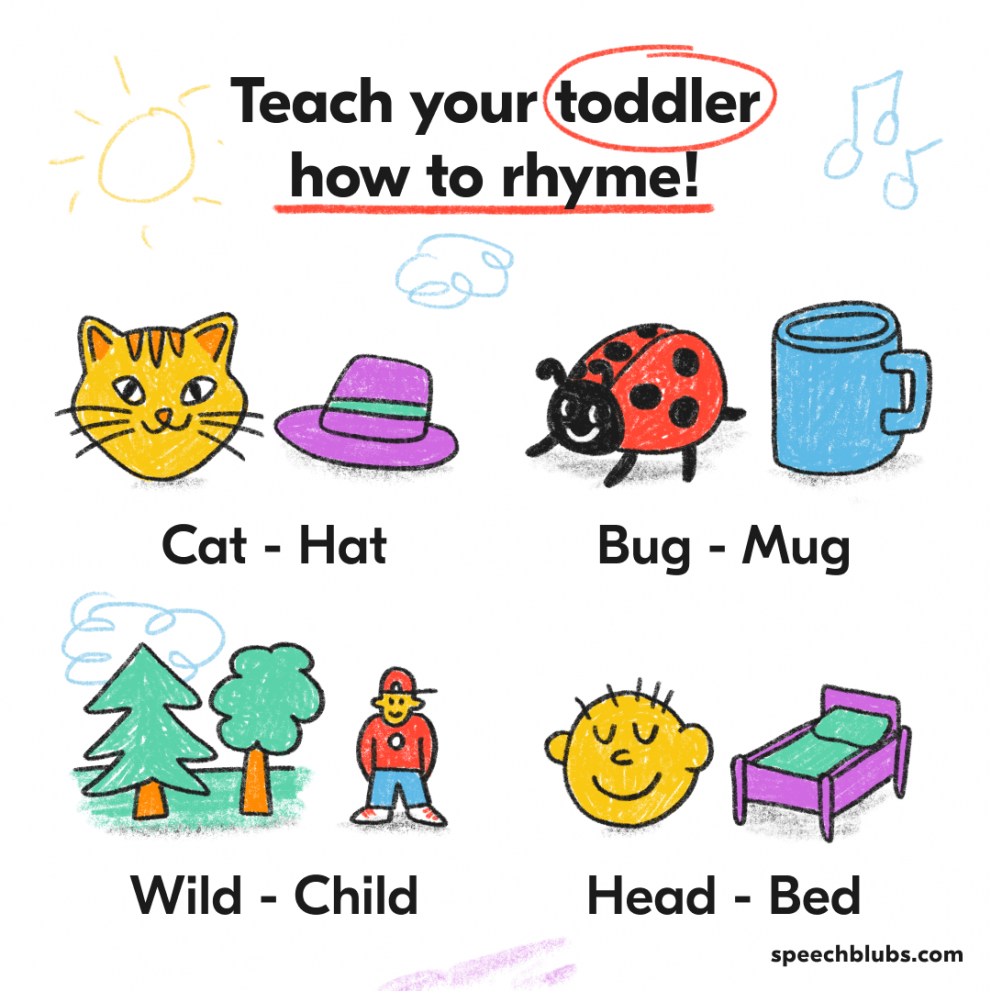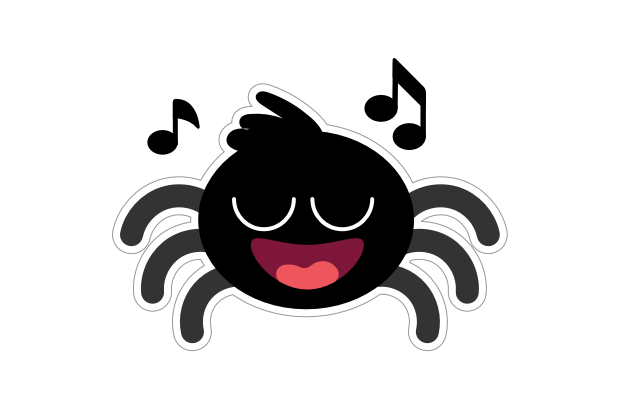Rhymes and Their Benefits for Speech
Jan 15, 2022 How to teach rhymes to little kids? How rhymes can help develop language? Games or activities to teach rhymes?
One of my favorite children’s authors, Dr. Seuss wrote, “The more that you read, the more things you will know. The more that you learn, the more places you’ll go.” It wasn’t simply his words and wisdom that were important, it was also the rhyme.

Singing, rhyming and storytelling are a part of every culture. By doing this, parents not only keep traditions alive, but they teach their children how to say words, practice pitch, volume, and the rhythm of their native language. Rhymes for kids also help develop the listening and comprehension skills necessary for brain development and memory.
Experts in literacy and child development have discovered that if children know eight nursery rhymes by heart by the time they’re four-years-old, they’re usually among the best readers by the time they’re eight.
Reading Magic, Mem Fox (2001)

Listening to music and singing along to rhymes for kids helps develop:
- an awareness of different emotions and feelings,
- speech by repetition of words,
- hand-eye coordination by getting a good sense of beat from music,
- memory skills by singing favorite songs regularly,
- an understanding of concepts such as night, day, under, over, animals, rain, stairs, etc., and
- timing skills which help him to kick moving balls, and throw and catch things.
Activities for Newborns
Babies respond well to your voice and movement, and similar sounds and same consonants. I know both of my children were much calmer if they were moving around in my arms. These songs can all be used with toddlers, as well.
Hickory Dickory Dock
Hickory dickory dock, (Touch your baby’s toes, knees, hips)
The mouse ran up the clock. (Tickle up his body)
The clock struck one, (Touch his nose)
The mouse ran down, (Tickle down his body)
Hickory dickory dock. (Touch his toes, knees and hips)

Incy, Wincy Spider (Itsy Bitsy Spider)
Incy, Wincy spider
Climbed up the waterspout. Down came the rain
And washed poor Incy out. Out came the sun
And dried up all the rain
And Incy, Wincy spider
Went up the waterspout again.
Use your hand to be the spider that climbs up your child’s body, tummy or arm. Your child might like to be the spider and use her fingers to ‘climb’ up your arm!
Round and Round the Garden
Round and round the garden, went the teddy bear. One step, two steps,
Tickle under there.
(Walk your fingers around your child’s palm. Take steps with your fingers up their arm, and then tickle their armpit or chin. Also works with feet!)
Activities for Toddlers

It’s Raining, It’s Pouring
It’s raining, it’s pouring,
(Wiggle fingers, move arms downwards like rain)
The old man is snoring.
He bumped his head
On the side of the bed
And couldn’t get up in the morning.
Head, Shoulders, Knees, and Toes
Head, shoulders, knees and toes, knees and toes.
Head, shoulders, knees and toes, knees and toes.
And eyes and ears and mouth and nose, Head, shoulders, knees and toes, knees and toes.
Try singing this using different body parts e.g. head, tummy, hips and thighs, hips and thighs. This really helps children learn the names for the parts of their body, and they produce a rhyming word(s).
Boost Your Child’s Speech Development!
Improve language & communication skills with fun learning!

Rhyming is an important pre-reading skill that can benefit your child later on. The ability to rhyme occurs in three unique stages.
| Stage 1: | Hearing Rhyme | The child grows accustomed to hearing and repeating rhyme. |
| Stage 2: | Recognizing Rhyme | The child can identify two rhyming words. |
| Stage 3: | Producing Rhyme | The child can think of a word that rhymes with another. |
If you want to help your child learn how to rhyme, use books, games, and engaging activities that promote rhyming ability. There are tons of books that can help with rhyme schemes, and rhyming lyrics and poems; just put a simple search into google or amazon. Like Dr. Seuss or Sandra Boynton, my favorites are anything that teach the alphabet along with rhymes.
